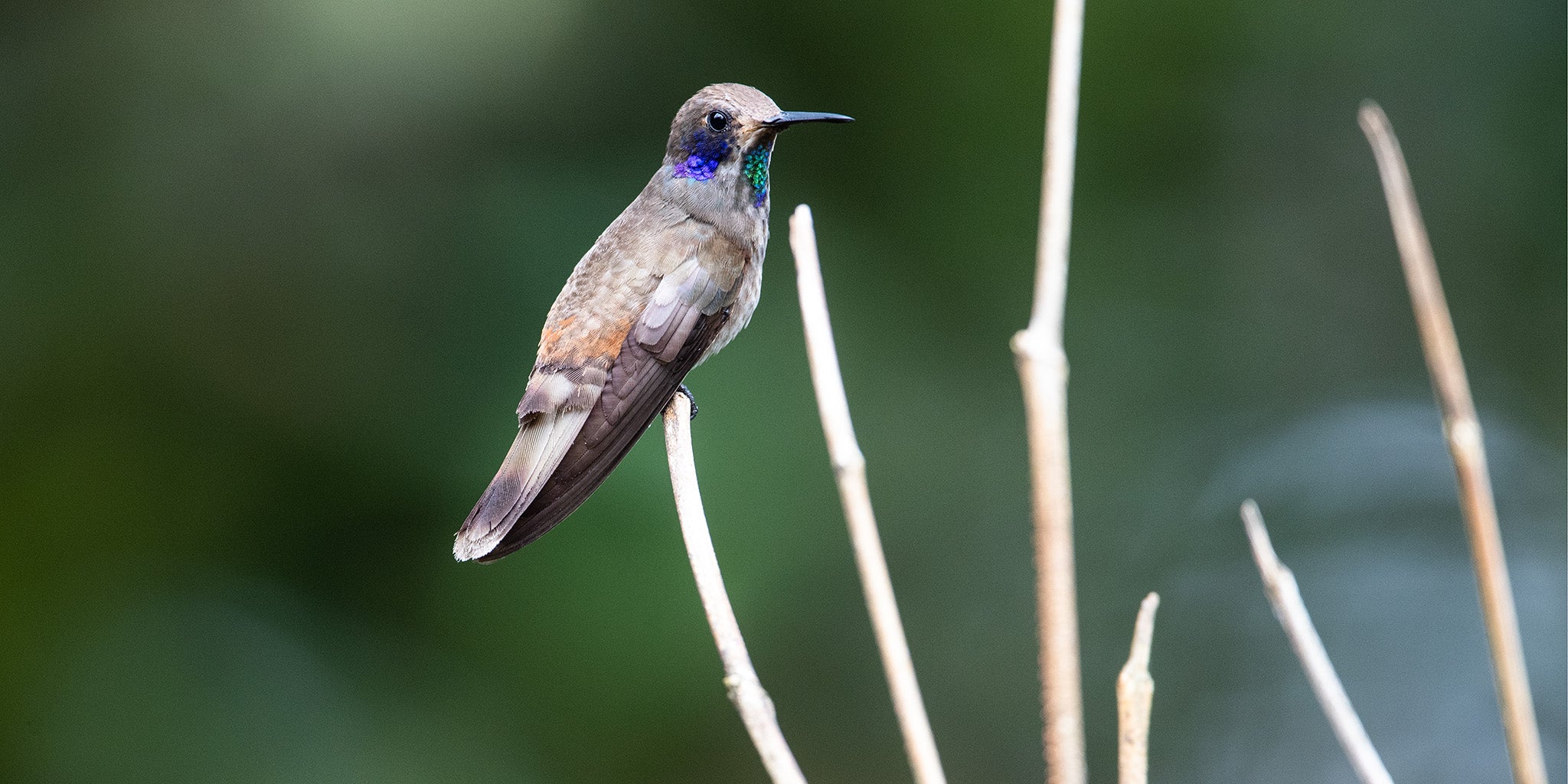Brown Violetear
The Brown Violetear (Colibri delphinae)
Appearance: The Brown Violetear is a medium-sized hummingbird with distinct features. It has dark brown plumage on its upperparts, a bright iridescent violet-blue patch behind its eye, and a shimmering green throat. The underparts are mostly grayish-brown, and the tail is forked.
Habitat: The Brown Violetear is found in montane forests, cloud forests, and humid Andean habitats. It prefers areas with abundant flowering plants that provide a source of nectar for feeding.
Behavior: The Brown Violetear is known for its agility and quick movements. It feeds on nectar from flowers using its specialized tube-like tongue. These hummingbirds are also known to defend feeding territories aggressively.
Breeding: The breeding behavior of the Brown Violetear involves elaborate courtship displays by males to attract females. Nests are small cup-shaped structures made of plant fibers and placed in trees or shrubs. The female incubates the eggs while the male may assist in defending the nest.
Conservation Status: The Brown Violetear is categorized as "Least Concern" by the International Union for Conservation of Nature (IUCN).
Distribution
The Brown Violetear (Colibri delphinae) is primarily found in the Andean mountain range of Colombia. Specifically, this species of hummingbird is commonly sighted in the mountainous regions along the Andean slopes, including both the eastern and western slopes of the Andes. The Brown Violetear prefers montane forests, cloud forests, and other humid Andean habitats with abundant flowering plants that provide nectar for feeding.
Eastern Andes: Regions such as Boyacá, Cundinamarca, and Santander departments, where the species inhabits montane forests and cloud forests on the eastern slopes of the Andes.
Central Andes: Areas in departments like Caldas, Risaralda, and Quindio, where the Brown Violetear may be found in the mountainous terrain with lush vegetation and diverse floral resources.
Western Andes: Locations in departments such as Antioquia and Chocó, where the species inhabits the humid forests and forest edges on the western side of the Andes.
Taxonomy
The Brown Violetear (Colibri delphinae)
- Kingdom: Animalia
- Phylum: Chordata
- Class: Aves (Birds)
- Order: Caprimulgiformes
- Family: Trochilidae
- Genus: Colibri
- Species: Colibri delphinae
Vocalization
The Brown Violetear (Colibri delphinae) The vocalizations of the Brown Violetear typically include a variety of calls and sounds.
- Chirping: The Brown Violetear produces rapid and high-pitched chirps or chirruping sounds, which are often used as contact calls between individuals or during interactions within their social groups.
- Whistles: This species may also emit whistling notes, often clear and melodious, as part of their vocal repertoire. These whistles can serve as territorial calls or during courtship displays.
- Rattling: Brown Violetears are known to produce rattling or buzzing sounds, which can be aggressive vocalizations used in territorial disputes or to warn off intruders.
- Squeaks: In addition to chirps and whistles, these hummingbirds may also utter short, sharp squeaks or clicking sounds, which can convey different messages depending on the context.
- Buzzing: During flight or aggressive encounters, the Brown Violetear may create buzzing sounds with their wings, adding to the auditory signals they use to communicate.







